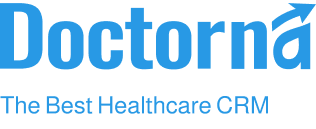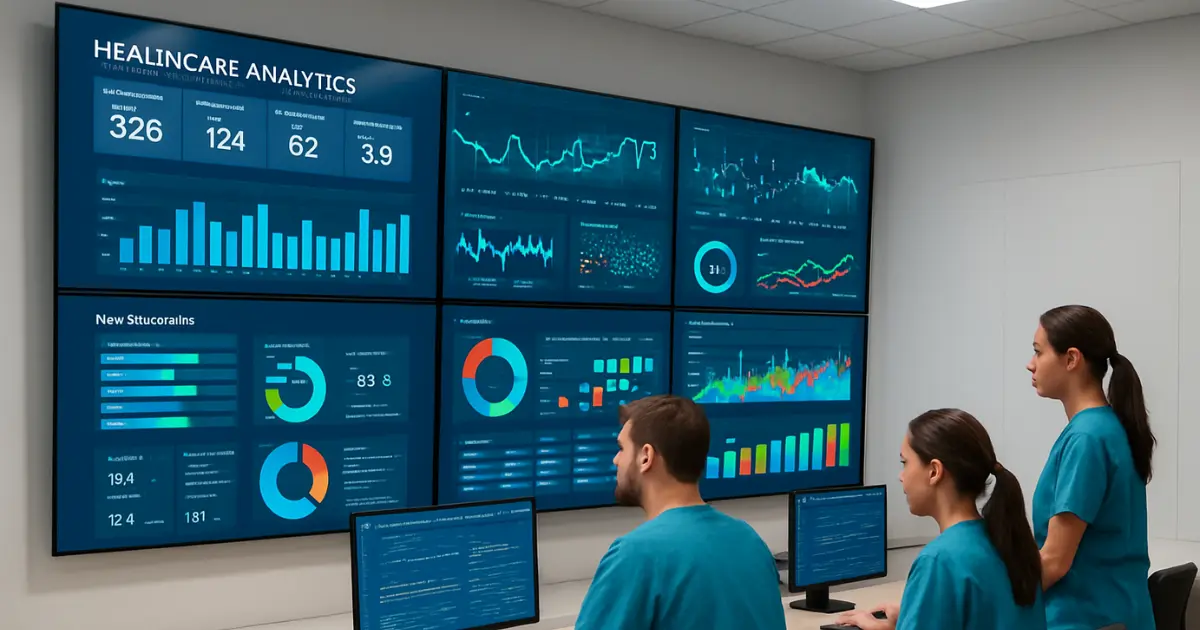A. Understanding Patient Acquisition Costs [PAC]
Patient acquisition costs or PAC refers to the expenses associated with obtaining a new patient. It is an essential metric that showcases the total cost to find, nurture, and convert a prospect into a patient.
Ideally, your patient acquisition costs must be lower than the patient’s lifetime value [LTV], or the amount of money this patient brings into your medical practice throughout their care journey. The benchmark for a healthy ratio of patient LTV to patient acquisition cost is 3:1. If yours is below 1:1, you must reevaluate your marketing campaigns.
A1. Why Patient Acquisition Costs Matter
Obtaining new customers is vital for the success of any organization, irrespective of the industry. Patient acquisition costs matter because it strikes the perfect balance between growth and sustainability. Determining PAC is crucial as it showcases whether you’re accurately spending to nurture new patients, helps optimize ROI from investments, and identifies channels that brings the highest ROI.
In a nutshell, PAC is a fundamental criterion for understanding the efficacy of marketing initiatives. It offers powerful insights that help your practice thrive in this competitive realm.
A2. Factors Influencing PAC
PAC is a multifaceted metric shaped by both internal and external factors. Let’s look at the key drivers of patient acquisition costs.
- Marketing and Advertising Costs
- Digital Marketing: Costs generated from digital marketing initiatives like search engine optimization [SEO], pay-per-click [PPC] advertising, social media marketing, and email campaigns.
- Traditional Marketing: Costs generated from traditional marketing initiatives like print advertising, tv, radio, and direct mail campaigns.
- Public Relations: Costs generated from public relation efforts like press release and media outreach.
- Sales and Marketing Personnel Costs
- Salaries and Benefits: Compensation for sales and marketing team, including account executives, telemarketers, and managers.
- Commissions and Incentives: Performance-based incentives for sales and marketing team.
- Training and Development: Investment in training and developmental activities for the team.
- Operational Costs
- Administrative Support: Cost directly tied to patient acquisition, such as administrative support, patient onboarding process, utilities, and other operational expenses.
- Technology and Software Costs
- CRM Systems: Investment in healthcare customer relationship management tools to streamline interactions and manage marketing campaigns.
- Marketing Automation Tools: Investment in automating marketing activities like, email marketing and lead nurturing.
- Website and App Development: Costs generated through developing and managing a user-friendly website and app.
- Competition and Market Saturation
- Local Competitors: Highly populated areas with stiff competition can increase patient acquisition costs.
- Market Saturation: Highly saturated markets increase PAC as it is difficult to attract new patients.
- Patient Demographics and Psychographics
- Patient Demographics: Patient demographics, including age, gender, location, and socioeconomic status can significantly impact PAC. For instance, a younger audience may be more receptive to digital marketing campaigns, while an older audience prefer traditional or personalized outreach.
- Psychographic Factors: Psychographic factors like lifestyle, health consciousness, risk perception, and technology adoption influences PAC.
- Patient Experience and Retention Costs
- Quality Care: High-quality care leads to better patient retention and referrals, thereby reducing the need for costly outreach.
- Patient Engagement and Retention Programs: Loyalty programs and other forms of patient engagement schemes not only retains existing customers but also draws new patients, thus reducing the need for repeated acquisition efforts.
- Reputation and Referral: Positive reviews bring organic referrals, thus reducing outreach activities.
Understanding these key factors will enable you to make informed decisions and strategically plan your outreach campaigns.
A3. How to Calculate Patient Acquisition Costs?
To accurately calculate your patient acquisition costs, follow these steps:
- Step 1: Determine the total marketing and sales costs.
Include all expenses related to acquiring new patients, including marketing and sales costs, technology expenses, and operational costs. - Step 2: Determine the number of new patients acquired during your campaign.
- Step 3: Calculate the patient acquisition cost by using its formula
PAC = Total Marketing Costs / Total Number of New Patients
For example, let’s assume your marketing budget is 3,000AED for a month. You allocate 1,800AED to sales and marketing, 600AED for operational costs, and 600AED to technological investments. During your campaign, you gained 50 new patients. So, your PAC is
3,000/50 = 60AED
A4. How to Interpret PAC
Here’s how to interpret PAC
- Lower PAC: A lower PAC value indicates efficient marketing as you gained new patients at a lower cost.
- High PAC: A higher PAC value indicates your marketing efforts are less effective or you’re acquired patients from an expensive market.
It’s important to state that the definition of low and high patient acquisition cost is subjective and based on your unique business goals; however, generally speaking, a lower PAC is considered better.
B. How Healthcare CRMs Reduce Patient Acquisition Costs
Healthcare CRMs are revolutionizing the way we experience and deliver care. It helps target our efforts precisely and enhance overall efficiency. Let’s look at the four key ways healthcare CRM tools reduce patient acquisition costs.
- Targeted Marketing and Patient Segmentation: One of the primary benefits of implementing a healthcare CRM software is its ability to target specific demographics with tailored marketing campaigns.
As healthcare CRMs create a hub of vital patient information, it can efficiently create personalized marketing campaigns that resonates with the target audience.
This targeted approach utilizes resources adequately and improves the probability of acquiring new customers. By eliminating broad and unfocused campaigns, healthcare organizations can achieve better results and reduce PAC. - Improved Patient Retention and Engagement: It’s no doubt that acquiring new patients is an expensive endeavor than retaining existing customers. Healthcare CRMs help foster long-term relationships by offering personalized interactions throughout their care journey.
In an era where personalization is key, customized interactions ultimately enhances patient satisfaction and loyalty. This strategy helps reduce churn rates and maximize lifetime value of patient.
Consequently, healthcare organizations see greater ROI on their initial acquisition costs, thus lowering PAC with time. - Efficient Lead Management: Health CRM systems excel at tracking and managing leads through each phase of the acquisition funnel. Early-stage identification of high-quality leads helps providers avoid wasting efforts on those who will probably never convert.
Similarly, CRMs are able to track sources of leads from marketing campaigns, referrals, and digital channels, which gives providers an idea about the ease of access by different modes of acquisition. Efficient lead management prevents the dissipation of marketing spend by making sure that acquisition efforts are directed appropriately. - Enhanced Patient Satisfaction and Referrals: Satisfied patients are likely to recommend the same service provider to friends and family, thus paving the way for organic and almost free referrals.
Healthcare CRMs form the backbone of any positive patient experience, allowing seamless, personalized interactions and prompt responses to patient needs. CRMs thus allow providers to understand patient preference, predict patient needs, and address concerns accordingly.
Besides, this level of service equates to higher patient satisfaction that only serves to further strengthen loyalty and encourage referrals—a powerful tool in the drive to reduce PAC while growing the patient base.
C. The ROI of Healthcare CRM on Patient Acquisition
The implementation of a healthcare CRM system is not merely an operational improvement; it is a strategic move to the bottom line. With a reduction in PAC and smoothening of the patient journey, significant enhancements in ROI can be realized by healthcare organizations. Here are some key metrics to track and understand the financial benefits of CRM adoption:
Key Metrics to Track ROI on CRM Implementation
- Patient Lifetime Value (LTV): One of the major benefits of implementing a CRM into an organization would be its capabilities for patient retention and loyalty, driving up the patient LTV.
LTV features the total revenue a patient will generate during a defined period with a healthcare provider. CRM systems enable health care providers to improve communication and treatment personalization while tracking preference for patient ability to increase LTV through repeated visits, ongoing treatments, and referrals. This value in the long run offsets the acquisition costs in the beginning and maximizes profitability. - Retention Rates: It also allows for better patient retention rates—a very important constituent of overall ROI. With timely follow-ups, personal communications, and proactive care, CRM enables strong and continued relations with your patients.
Higher retention reduces the necessity for constant new patient acquisition efforts and hence reduces overall costs, contributing to financial stability on more secure grounds. - Referral Numbers: Another key metric that CRM systems influence is patient referrals. Clearly, satisfied patients refer health care providers to others more; hence, this is one of the lower-cost methods for increasing volumes of patients.
With improved satisfaction because of CRM systems, organic word-of-mouth marketing by providers relieves them from huge expenses that are required for acquiring a new patient, thus enhancing ROI.
C1. Cost-Benefit Analysis
From a financial perspective of CRM implementation, the evaluation in cost-benefit analysis has to be done. Investment in CRM systems—software, training, and integration—involves a hefty upfront cost, but the accruals through these systems later on far offset the financial costs. Here is what the balance sheet looks like:
- Value Proposition: With better lead management, effective patient segmentation, and correct targeting of campaigns, the health organizations have to spend less on the acquisition cost per each new patient. This would also reduce the PAC.
- Improved Patient Retention: Better engagement, follow-up, and personalized communication from healthcare CRMs increase patient retention, reducing dependence on expensive marketing and leading to consistent revenue growth.
- Improved Patient Satisfaction and Referrals: A happy patient—one who is valued and engaged—is more likely to refer others, which means an increase in new patients without additional marketing dollars.
- Operational Efficiency: More than the direct generation of revenue, CRMs help automate administrative tasks such as appointment scheduling, billing, and follow-up that saves a lot of time and cuts the cost of staff.
In other words, while the initial costs of implementing a CRM system may seem high, the possible ROI in financial benefits accrued—especially to reduce patient acquisition costs, retaining patients, and encouraging referrals—is clear.
By streamlining operations and improving patient experiences, healthcare organizations can achieve sustainable growth, improved profitability, and optimized resource allocation. The result is a far more efficient, patient-centered healthcare environment which delivers value both to patients and the bottom line.
D. Conclusion
In today’s competitive healthcare environment, reducing patient acquisition cost is getting crucial by the day. Healthcare CRM systems have taken a lead in this regard by providing an overarching solution through streamlining marketing and communications, enhancing patient engagement, and overall satisfaction. Centralization of patient data, automated administrative tasks, and personalized interaction allows to reduce patient acquisition costs – effective along with driving better long-term patient loyalty.
As we have learned, implementing a CRM system is not a short-term operational improvement but a strategic investment with long-term gains. The advantages extend to more than cost reductions and facilitates better care coordination, patient engagement, and loyalty.
For every healthcare organization that seeks to lead in the dynamic healthcare landscape, implementing a CRM system is not the latest fad, but an essential need. If you want to optimize patient acquisition and create a more efficient, cost-effective healthcare practice, look no further than to a healthcare CRM.







